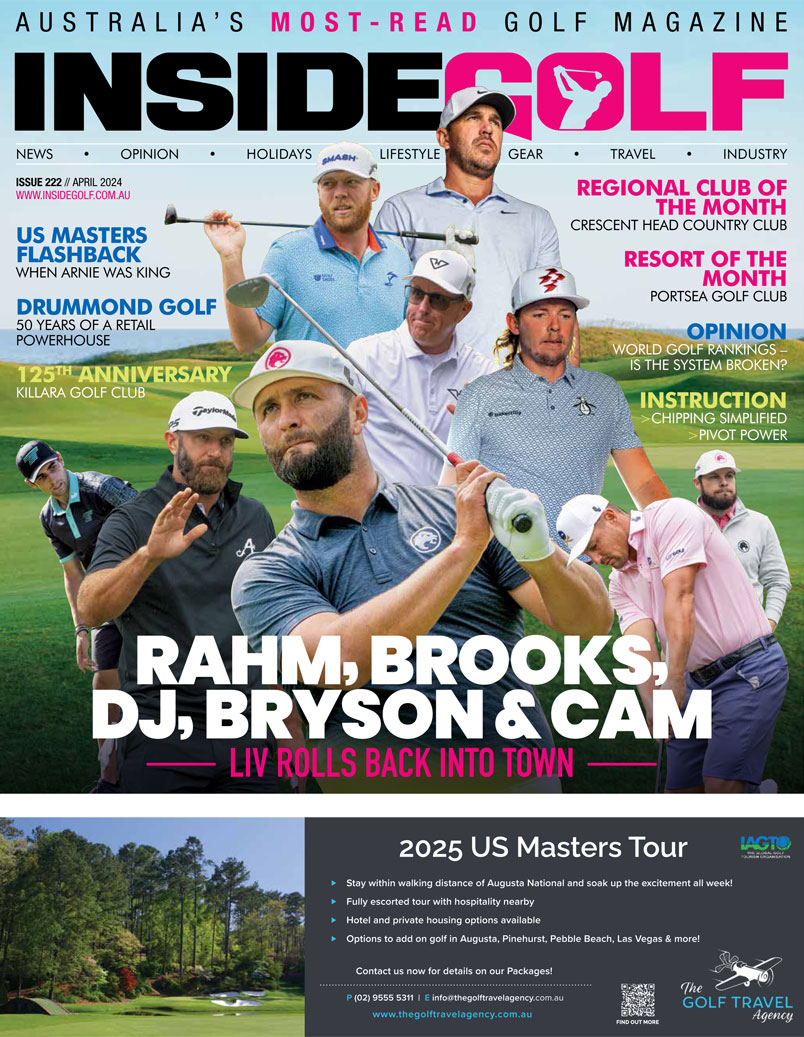This month, we’ll discuss the two most common swing faults by golfers.
S Posture at setup: It is easy to spot this poor postured golfer. If you look at their lower back from down-the-line, it has an excessive swayback or curvature creating what we commonly refer to as the “S-posture” or lower crossed syndrome . In photo 1, you can see the curvature in the lower back (red line), the rounded shoulders or kyphotic appearance and the tight right arm, high right wrist position( yellow line) and tight neck muscles . Note how the chin is tucked into the chest (green circle).
This posture is a common setup fault of golfers, and some golfers actually position themselves this way on purpose because they have been told to “stick your butt out at address”, however by setting up this way, they are putting their lower backs in jeopardy. Lower back pain is one of the most common complaints of all golfers. You can actually stick your butt out at set up without arching your back if you just hinge from your hips and keep your spine in a neutral stable posture. Obviously, this requires good core strength and proper stabilization in the lumbar spine.
Unfortunately, not all golfers can easily fix this fault, due to the physical limitations that will accompany this fault. S posture setup relates to tight hip flexors (the muscle at the front of your hips) and poor awareness or activation in the deep lower abdominal muscles. This adaptation occurs from prolonged static postures (i.e. sitting and a sedentary lifestyle). The end result is that the pelvis tilts and creates a very unstable position for the lower back.
Kyphosis of the shoulder girdle is the result of poor lifestyle habits and sedentaryism, and is often seen in those golfers who sit at computers for lengthy periods or who travel frequently. This creates weakness in the muscles that support the shoulder blades and neck. Muscles in the chest and upper neck tighten up considerably, creating stiffness and loss of extension in the mid back (thoracic spine) preventing the golfer from achieving an optimal posture at setup and therefore do not allow the body to turn in the correct direction (whilst maintaining good postural shape) and the arms to function correctly.
If you have an “S Posture”, it very easy to eliminate. All you need to do is perform stretches to help lengthen your hip flexors and lower back muscles, and perform exercises that help develop strength in the abdominals and glute muscles. Once these muscle imbalances are corrected, work on developing strength in a stable neutral lower back posture.
Loss of Spine Angle (Shape): This is simply any significant alteration from your body’s original set up angles (postural shape) during your golf swing. Photo 2 shows the typical look of a golfer who loses spine angle or alters their body levels. Note how the body has gone around (yellow line), low across the chest position of the arms (blue line), the spine angle straightened from where it started at address in the original postural angle (green line). From this position the club will work outwards, the arms will move out first and then try to get inside and shallow on the way down. The classic “over the top/ outside in move”.
A common denominator in good players is that they maintain this spine angle from the start (what we call ‘more over the ball’) , this creates more room to fit the arms coming down. Body angle stays over and the arms drop
When the spine angle changes on the backswing, the body will turn first, making the hands and arms move more out and steeper at the start of the downswing.
Again this swing fault can be due to physical limitations. These range from poor flexibility in the thoracic spine, poor rotation range in the neck and poor range of motion in the shoulder joints to name a few. To correct this, you will need to undertake a series of specific exercises targeting postural change and flexibility through the spine and motor pattern correction drills.





![Win the golfing experience of a lifetime, at the Hawai‘i International Week of Golf, valued at $6,900 [Winner Announced] Win the golfing experience of a lifetime, at the Hawai‘i International Week of Golf, valued at $6,900 [Winner Announced]](https://www.insidegolf.com.au/wp-content/uploads/Hawaii-Comp-500x294.jpg)